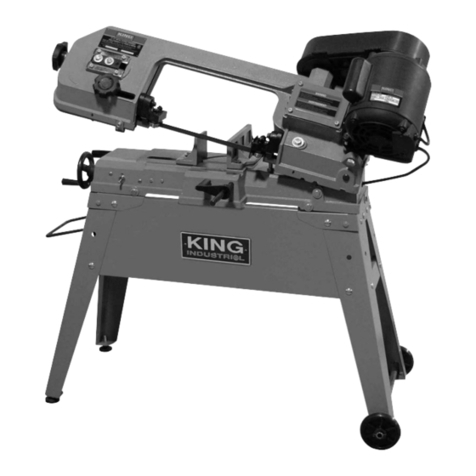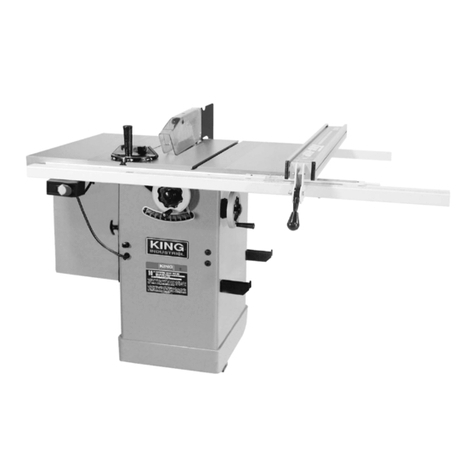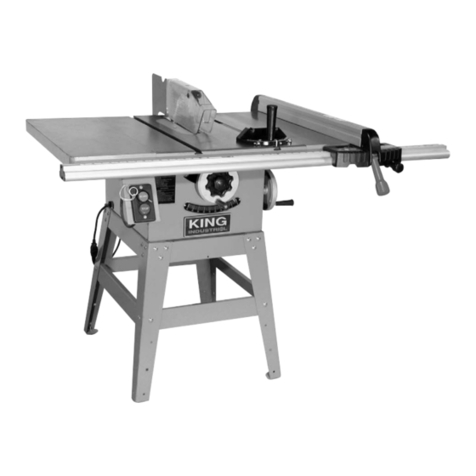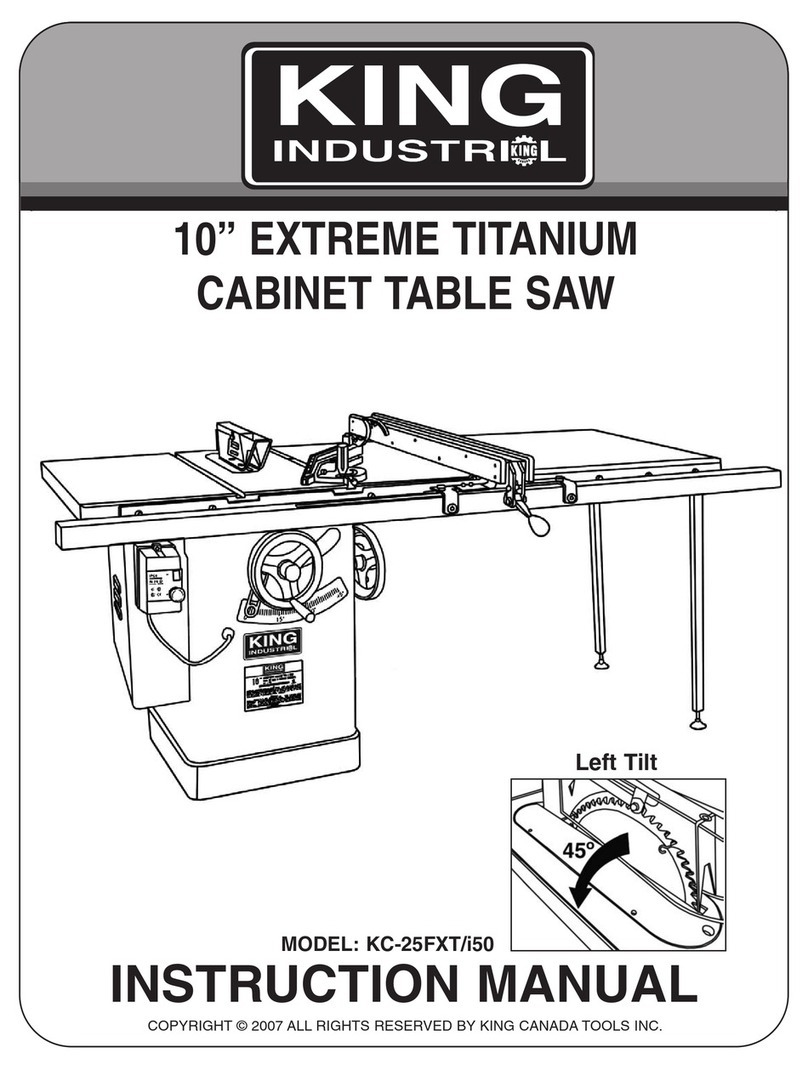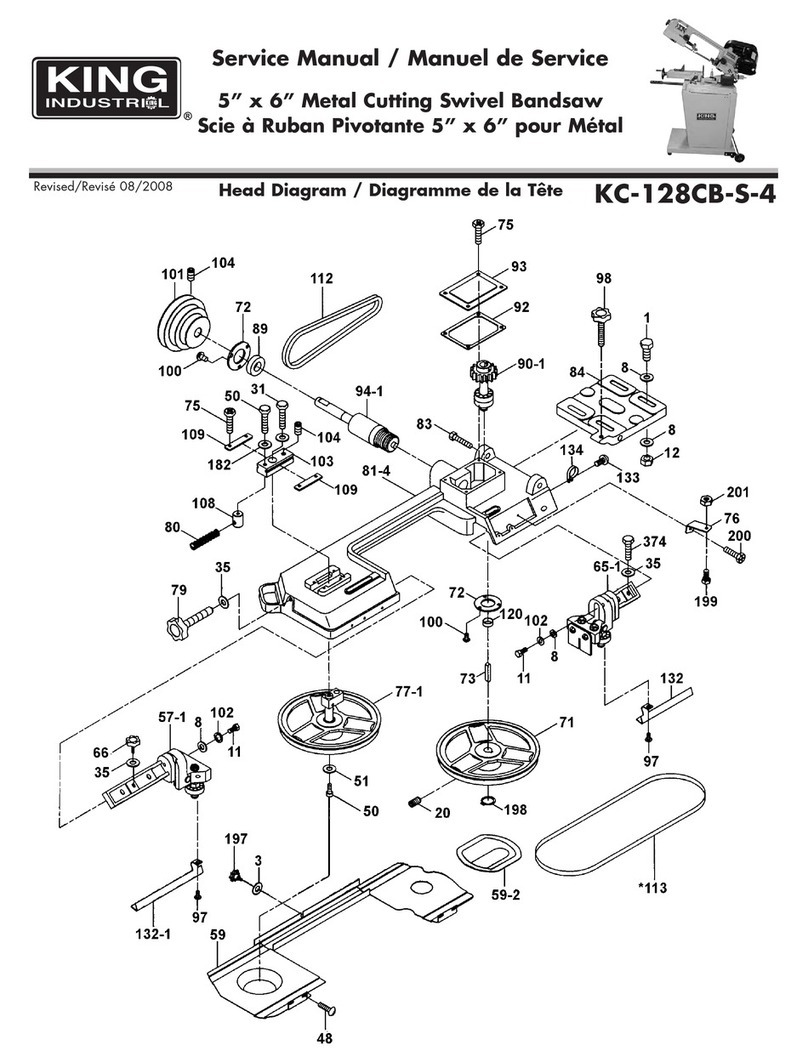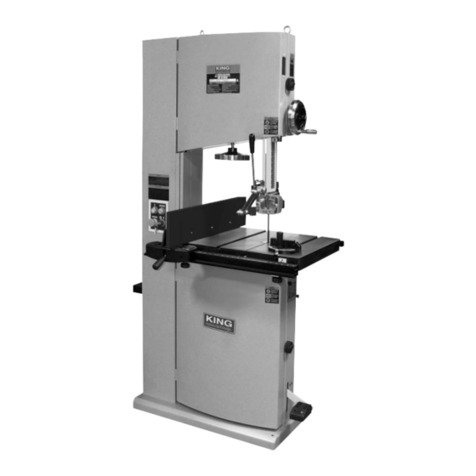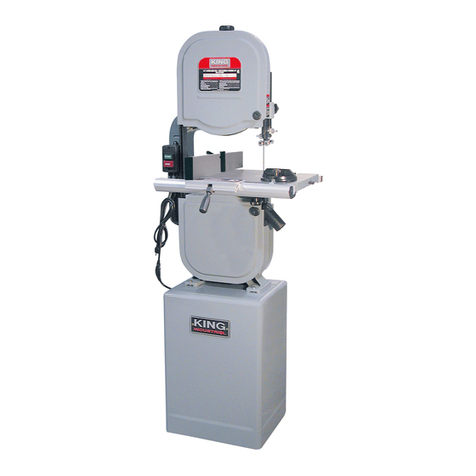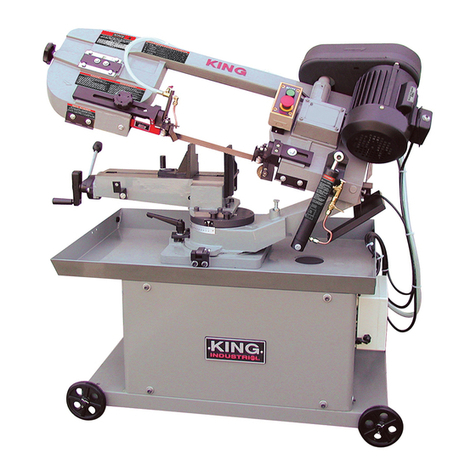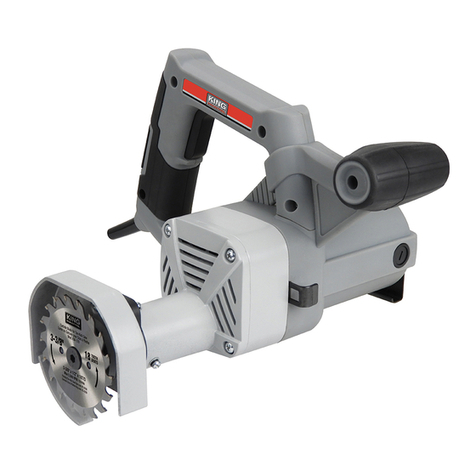SPECIFIC SAFETY INSTRUCTIONS
FOR PLUNGE CUT TRACK SAWS
SPECIFIC SAFETY INSTRUCTIONS
1. Make sure the voltage matches the specifications on the
specifications nameplate of the tool.
2. Persons with restricted physical, sensory or mental capabilities are
not allowed to use this Plunge Cut saw unless they are supervised
and instructed by a supervisor.
3. Never leave the powered-on saw unattended and keep them out of
reach of children and persons in need of supervision.
4. Only use approved extension cords with a suitable AWG gauge.
5. Do not bring or move hands in the cutting area of the saw blade.
6. Wear appropriate work clothing as well as eye protection,
respiratory protection, hand protection and hearing protection.
Always handle the saw blade with gloves.
7. Keep in mind that even a worn blade is still very sharp. Always grasp
the blade on the sides. Do not fling the saw blade and do not drop
it.
8. Never use this Plunge Cut Track saw with a grinding wheel.
9. Do not grip underneath your workpiece. The protective cover can’t
protect you from the saw blade under the workpiece.
10. Adjust the cutting depth to the thickness of the workpiece. It should
be visible less than a full tooth height under the workpiece.
11. Do not cut very small workpieces. When cutting round wood, use a
device which secures the workpiece from twisting. Never hold the
workpiece to be cut in your hand or across your leg. It is important
to secure the workpiece properly to minimise the risk of physical
contact, jamming the saw blade or causing loss of control.
12. Hold the saw only by the insulated gripping surfaces when
performing an operation where the cutting tool may come in
contact with hidden power lines or its own power cord. Contact with
a live wire also exposes the metal parts to tension and leads to an
electrical shock.
13. When cutting longitudinally, always use the parallel stop or a
straight edge guide such as the optional 50” Track available from
King Canada. This improves the cutting accuracy and reduced the
possibility that the saw blade gets jammed.
14. Always use saw blades with the correct blade diameter and a
matching arbor size (20mm). Saw blades that do not match the
mounting parts of the saw will run unevenly and lead to loss of
control.
15. Never use a damaged or incorrect outer flange washer or a
damaged blade screw. The outer flange washer and the blade
screw have been specifically designed for your saw for best
performance and reliability.
16. Start the Plunge Cut Track saw and begin cutting only after it
reaches its full speed.
17. Never attempt to stop the saw blade using lateral pressure after
switching it off.
18. Set the saw aside only when the blade comes to a complete stop.
19. Do not expose the saw to high temperatures, humidity and strong
shocks. This saw can be damaged as a result.
CAUSES AND PREVENTION OF KICKBACK
1. A kickback is a sudden reaction as a result of a stuck, jammed or
misaligned saw blade which leads to uncontrolled saw to be lifted
and moved from the workpiece out in the direction of the operator.
2. A kickback can occur when the saw blade gets stuck or jammed in
the saw gap. The saw blade is blocked and the motor force repels
the saw in the direction of the operator.
3. A kickback can occur when the saw blade becomes twisted or
misaligned in the saw groove. As a result, the teeth at the back edge
of the saw blade can get stuck in the surface of the workpiece,
whereby the saw blade is moved out of the saw gap and the saw
jumps back in the direction of the operator.
A kickback is the result of incorrect or faulty use of the saw. It can be
prevented following these precautions, as described below:
1. Hold the saw firmly with two hands and bring your arms into a
position in which they can resist the kickback forces. Always place
yourself on the side of the saw, never bring the blade in line with
your body. In a kickback, the saw can jump backwards. The operator
can control the kickback forces if appropriate measures are taken.
2. If the saw blade jams or sawing was interrupted for any reason,
release the On/Off trigger and hold the saw in the material until the
saw blade comes to a complete stop. Never attempt to remove the
saw from the workpiece or pull it backwards as long as the saw
blade is moving or a kickback may occur. Find the cause of the saw
blade jam and eliminate through appropriate measures.
3. When you want to restart the saw that is stuck in a workpiece, center
the saw blade in the saw gap and check that the teeth are not stuck
in the workpiece. If the saw blade jams, it can move out from the
workpiece or a kickback can happen if the saw is restarted.
4. Prop up large panels in order to minimize the risk of kickback by a
jammed saw blade. Large panel tend to sag under their own weight.
Panels must be supported on both sides, both in the vicinity of the
saw gap as well as on the edge.
5. Do not use dull or damaged blades. Saw blades with blunt or
misaligned teeth cause increased friction, jamming of the saw blade
and kickback by an excessively narrow saw gap.
6. Tighten the plunge cut depth position prior to cutting. If the settings
change while cutting, the saw blade can jam and a kickback can
occur.
7. Be especially careful if you perform a “plunge cut” in a hidden area,
such as an existing wall. The protruding saw blade can get blocked
in hidden objects while cutting and cause a kickback.
8. Do not place the saw on workbench or the floor unless the saw
blade has come to a complete stop. An unprotected, running saw
blade move the saw against the cutting direction and cuts whatever
is in its way. Note the delay time of the saw.
9. For this reason, this saw is not suitable for use in reverse direction
as a fixed equipment.
10. Do not use this saw if it is not working properly or has been
damaged. In case of technical problems, do not attempt to repair
it on your own. Contact a King Canada service center to have the
saw repaired professionally.

